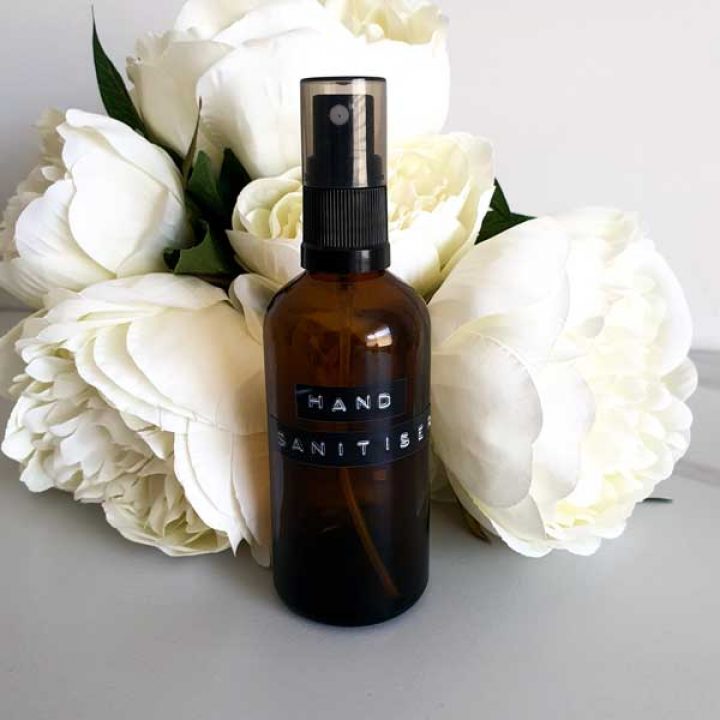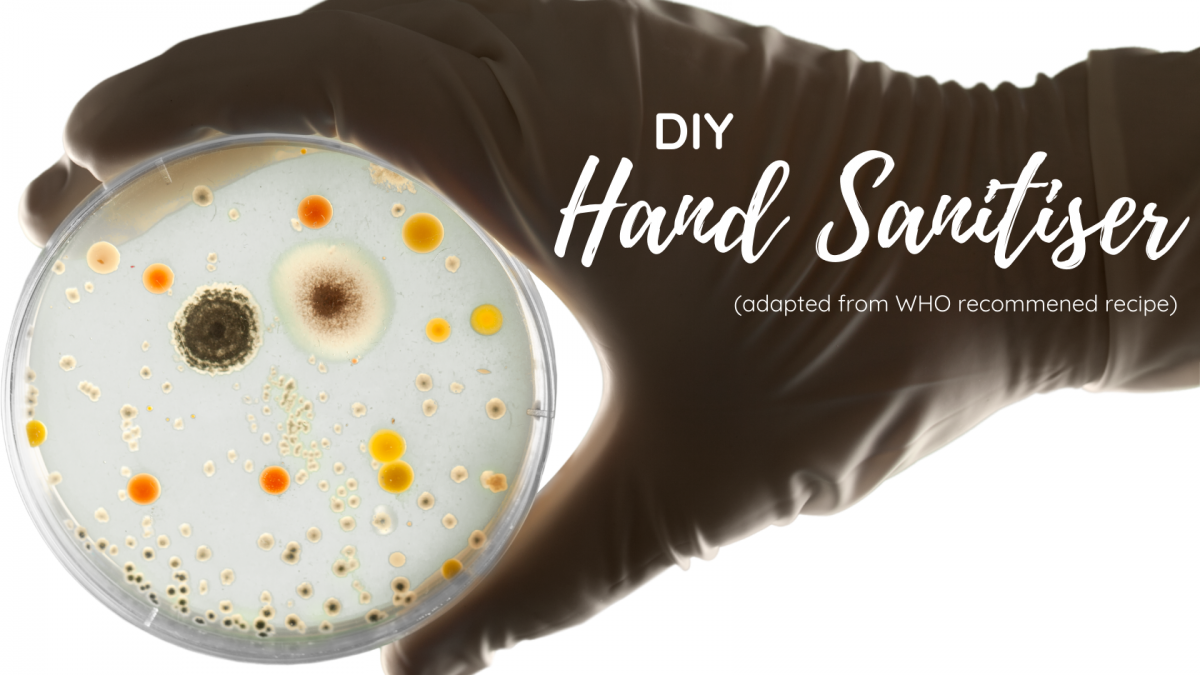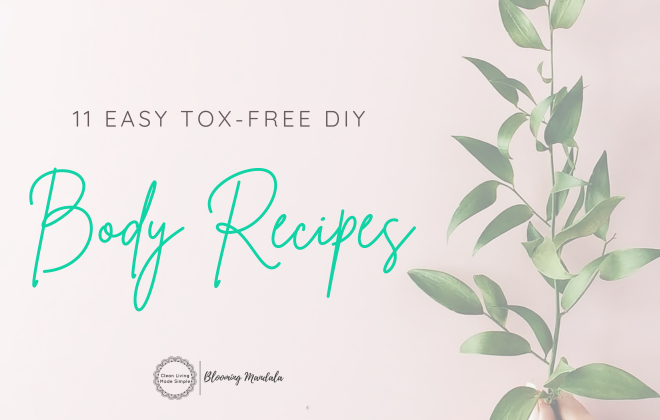DIY Hand Sanitiser – WHO Recommended Recipe
We have been inundated with enquiries for an effective and safe DIY hand sanitiser. We had been holding off on releasing one as we did not want to give you an ineffective recipe and we wanted to wait until we were confident we would not be putting the safety of our recipe users at risk. We are pleased to say we now have one we are happy to share.
This DIY hand sanitiser recipe is actually not our recipe. Rather it is a scaled-down version of one recommended by the World Health Organisation (WHO). If you are looking to make 10L of hand sanitiser you can find the original recipe here. If you are looking to make around 300ml then this is the recipe for you.
Soap & Water is the Best Option
Although this blog is about a hand sanitiser we would be remiss not to point out that it should not replace washing your hands with soap and water. Your number one protection against infections is always hand washing! Properly washing hands with soap and water for at least 20 seconds remains the most effective defence against bacteria and virus’. If you want to learn why soap is so effective at protecting you from virus’ you can check out the science here. Hand sanitisers should never be viewed as a substitute for this, instead, they should be treated as an extra precaution if you feel extra protection is necessary. That said there are circumstances when you can’t easily access soap and water, this hand sanitiser is ideal for those times.
Alcohol-Based Hand Sanitisers
Although there are numerous hand sanitisers made without alcohol it must be remembered that to be approved for sale they must be proven to be effective. When preparing a DIY hand sanitiser we must keep in mind that the current advice in light of all this Corona Virus madness is to use an alcohol-based sanitiser and that for a hand sanitiser to be effective it must contain over 60% alcohol.
In light of this, I would much prefer to make a DIY hand sanitiser based on alcohol as we can be sure we are making an effective preparation as the % of alcohol in the final solution can be calculated using some simple maths. On the other hand, we have no way of being sure that a non-alcohol based DIY hand sanitiser is actually effective. Unless you have a microbial testing laboratory at your disposal that is, which most of us don’t.
As noted above the recipe below is an adaption of a WHO formulation and uses only 4 ingredients, high % alcohol, 3% hydrogen peroxide, glycerine and distilled water and results in a final alcohol percentage of 75%, well above the 60% required to be effective. The hydrogen peroxide is used only as an antibacterial agent to kill any bacterial spores in the solution and does not an active ingredient. While the glycerin a humectant and is included as a moisture preserving agent as alcohol can be very drying for the skin. Both 3% hydrogen peroxide and glycerine can be purchased easily at the supermarket or chemist.
These 4 ingredients are all you need for an effective hand sanitiser. Many commercial versions contain toxic crap you don’t need like triclosan, Polyethylene glycol, propylene glycol, and synthetic fragrances and phthalates.
Not all Alcohols are Created Equal
There are 3 ingredient ratios in the recipe below to allow you to use whatever % alcohol is easiest for you to get hold of. We prefer to use 95% ethanol, also known as ethyl alcohol, grain alcohol or rectified spirit when we can as it is the safest choice and not derived from petroleum. Food grade ethanol is obtained by fermentation of potatoes, fruit, grain or sugar cane. And although it can be toxic in large quantities and we are all aware of the health concerns of overconsumption of alcoholic beverages, in this DIY hand sanitiser it is fine. There are no suspected health concerns from topical application of food-grade ethanol. We get ours from here, but you can also try here or here. Using this type of alcohol does make this recipe a tad expensive though.
If you cannot get your hands on 95% ethanol the other option is Isopropyl alcohol. Isopropyl alcohol is effective for use in hand sanitisers and deemed “safe” by the authorities. However, isopropyl alcohol is derived from petroleum, causes skin irritation and dryness and is a suspected respiratory, liver, kidney, cardiovascular and neurotoxin. You might be able to get your hands on some 99% isopropyl alcohol online or from a hardware shop. We have only outlined the health concerns of isopropyl alcohol to make sure you are fully informed about the ingredients in this recipe, not to stop you from using it. You need to weigh up the risks and determine what you are most comfortable with, short term exposure to some isopropyl alcohol is preferable to contributing to the spread of a declared global pandemic. But each to their own. I know what I would choose!
Alternatively, it may be easier for you to access rubbing alcohol, which is usually a 70% preparation of isopropyl alcohol that can be purchased for the supermarket or chemist. If using 70% alcohol solution please note the recipe below will not result in a final percentage of 75% alcohol (clearly), however, it will still be above the 60% concentration as required to remain effective.
Adding Essential Oils
The recipe below does not include any essential oils and is effective without any. However in saying that you can add some if desired, just bear in mind that any additional liquid will reduce the final alcohol %. There is a number of oils you could add to boost the anti-bacterial and anti-viral power of this hand sanitiser, such as lemon, lavender, tea tree, or one of the popular anti-bacterial, immune-boosting blends. Do not be limited by these suggestions though and use your favourite anti-viral, anti-bacterial oils.
But Hey! What if I hate DIY?
Don’t worry there is a natural alternative available!! For those that hate DIY or just want to get a good, yet low tox hand alcohol-based sanitiser asap my choice would be Dr Bronners Organic Hand Sanitiser. It can be purchased relatively easily from health food shops and organic stores and collectives. It only contains ethyl alcohol, lavender essential oil, glycerine and water. Awesome!!
Sanitising surfaces
This hand sanitiser can also be used to sanitise surfaces, such as shopping trolleys and dining tables in a pinch.
Safety Warning
High percentage alcohol is extremely flammable and toxic if ingested. When making and using this hand sanitiser make sure you are not near any ignition sources such as a gas stove or lit cigarettes (yep it has happened!). Be sure to CLEARLY label the finished product and keep out of reach of children.
We are just 2 Gals Sharing Information
Ok so we have to make the mandatory disclaimer. We are not medical professionals, chemists or experts in disease prevention. We have only shared the information we have obtained from other sources. Although we have done our due diligence and ensured the recipe we shared is approved by the World Health Organisation, we cannot take any responsibility for anyone falling ill from the use of this or any other recipe we share. Anyone who makes and uses this recipe does so at their own risk. (Sorry with the world going crazy we thought it prudent to include this).
If you are in any way in doubt about this DIY hand sanitiser, do not use, stick with commercial hand sanitisers if that makes you more comfortable. We have shared this recipe for those who are looking for an effective alternative in the event they cannot access any store-bought options.

DIY Hand Sanitiser - WHO recommended Recipe
An effective DIY hand sanitiser recipe recommended by the World Health Organisation
Ingredients
99% Alcohol Ingredient Ratios
- 1 Cup (250ml) 99% Isopropyl Alcohol
- 1 Tbsp (20ml) 3% Hydrogen Peroxide
- 1 tsp (5ml) Glycerine
- 2.5 tbsp + 1 tsp 55ml Distilled Water
95% Alcohol Ingredient Ratios
- 275ml 95% Alcohol (Rectified Spirits/ethyl alcohol)
- 1 Tbsp (20ml) 3% hydrogen Peroxide
- 1 tsp (5ml) glycerine
- 2tbsp + 1 tsp (45ml) Distilled Water
70% Alcohol Ingredient Ratios
- 1 cup + 2.5 tbsp (300ml) 70% Alcohol
- 1 tbsp (20ml) 3% Hydrogen Peroxide
- 1 tsp (5ml) glycerine
Instructions
- Add all the ingredients to a clean container and gently combine
- Transfer to CLEARLY LABELLED spray bottles for use
Notes
- The glycerine can be replaced with another moisture-retaining ingredient, like aloe vera gel, if desired.
- The hydrogen peroxide can be omitted, however, keep in mind this may reduce the shelf life of the product, however, if used up quickly this should be ok
- DISCLAIMER - Blooming Mandala are not medical professionals or experts in disease prevention. We have only shared the information we have obtained from other sources. We cannot take any responsibility for anyone falling ill from the use of this or any other recipe we share.
References
https://www.theguardian.com/commentisfree/2020/mar/12/science-soap-kills-coronavirus-alcohol-based-disinfectants
https://www.who.int/gpsc/5may/Guide_to_Local_Production.pdf
https://www.ncbi.nlm.nih.gov/pmc/articles/PMC3291447/








I can’t believe no mention of Thieves Sanitiser – the #1 sanitiser in the world that 99.9% kills germs and has NO nasties in it. 65% alcohol which is made from Peppermint.
I always (for over 8 years) carried my Thieves waterless hand purifier with me and would rather use that when I am out instead of soap supplied in public toilets etc. It was changed to Sanitiser last year in the US by FDA & has just got the OK from TGA to be classified as a Sanitiser here in Oz.
What can I put in the mix to make it more like a gel ?
Hi John,
You could try and get your hands on some aloe vera powder and try adding that to the recipe. Once the powder rehydrated it should return to a gel like state, and as you have not added any additional moisture to the recipe the alcohol % should stay the same. Hope this helps.
Can the glycerin be omitted?
Hi Denae,
Yes, the glycerine can be omitted if you like, or swapped out for aloe vera or another humectant (moisture preserving agent).
How can we factor in essential oils or fragrance oils?
Hi Kaye,
It should be fine as long as you don’t add so much the % of alcohol get lowered too much. For that reason, and because fragrance oils can contain all sorts of toxins, I would recommend essential oils. As they are highly concentrated less is required and some essential oils might actually enhance the anti-viral and anti-bacterial properties.